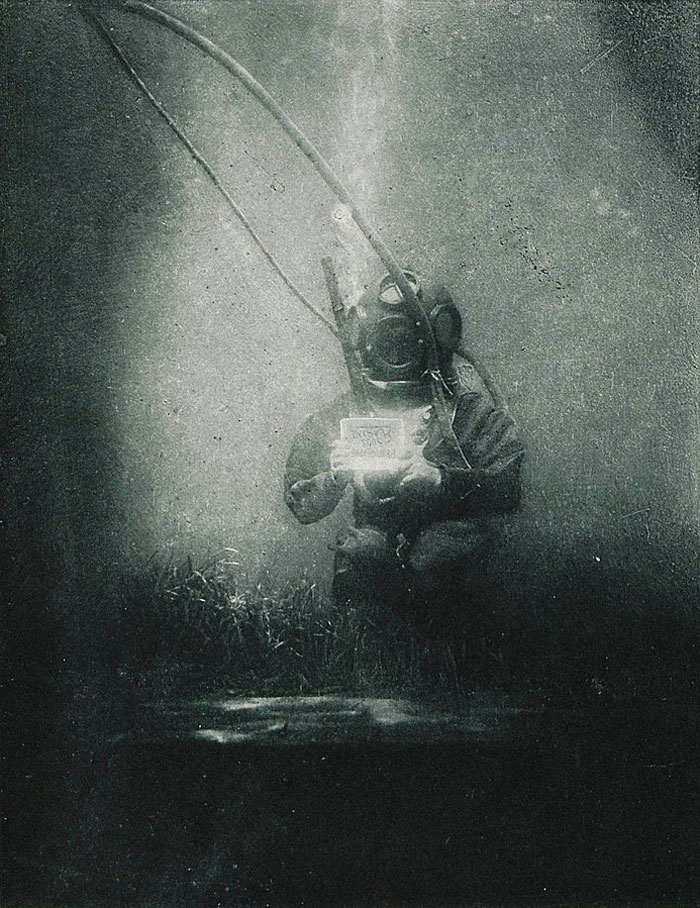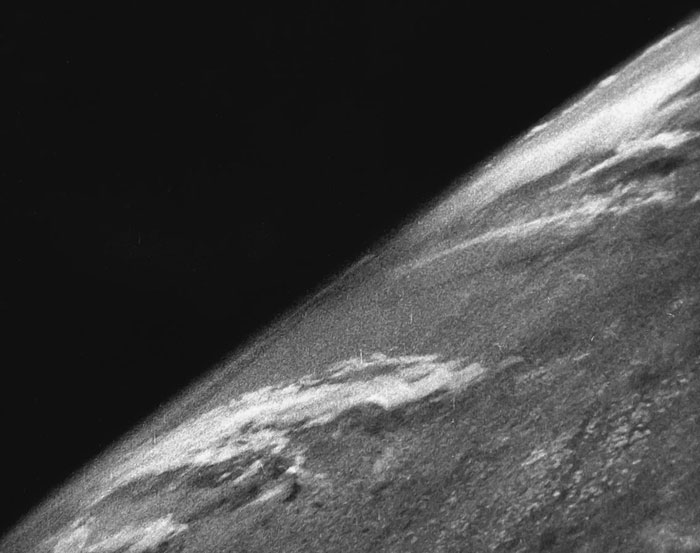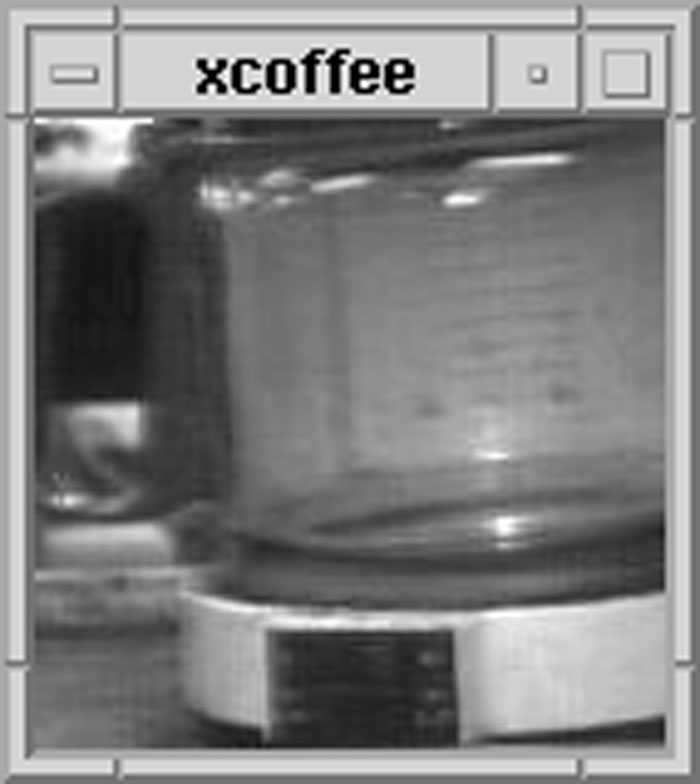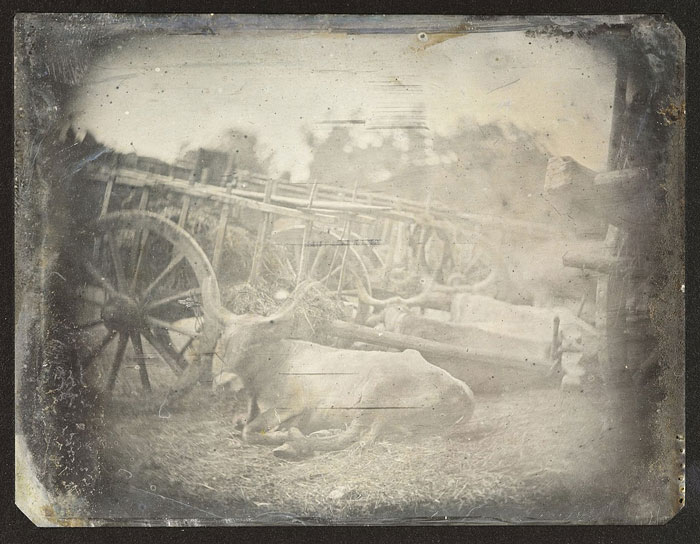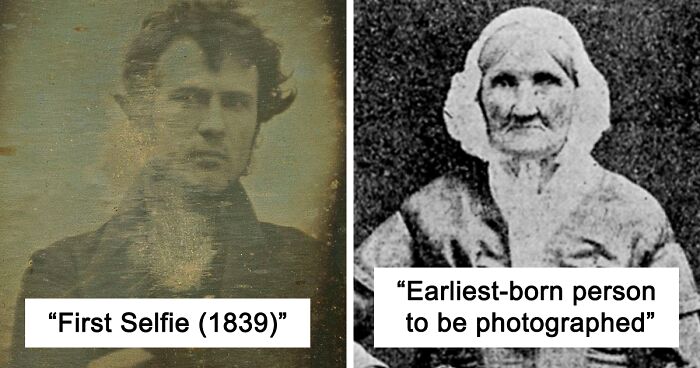
41 Of The Most Important Photos In Photography History As They Signal A New Era
Are you ready for a journey through time — one that will take you back to the early days of photography, when capturing a moment on film was nothing short of magic and common folks still had to rely on paintings and drawings to depict the world around them? Buckle up, because we’re about to take you on a wild ride through the history of photography!
We’ve scoured the archives and dug up a series of photos that are not just pictures but genuine milestones in the evolution of photography. From the earliest daguerreotypes to the latest digital masterpieces, photography has evolved and grown in ways that the pioneers of the medium certainly could’ve never imagined.
Sure, they may be nothing special visually, compared to modern-day standards. Most of these are 1800s photos, so the quality is often barely decent and the subjects simple. But who needs crazy high definition when you know you’re making history? You’ll see the oldest photograph ever taken, the first photoshopped picture, the first digital representation of a president, the first solar eclipse on film, and even the first webcam!
When there’s a chance to share our passion for diving into the past with our fellow Pandas, we take it. Whether you’re a photography buff, a history connoisseur, or just someone who appreciates learning new things to pump up your brain with cool tidbits of knowledge, this is a list you won’t want to miss. There are many firsts in photography, so without further ado, let’s dive into this collection of authentic photography milestones!
This post may include affiliate links.
Earliest-Born Person To Be Photographed
Hannah Stilley Gorby, born in 1746, holds the title of the earliest-born person ever captured in a photo. To put it in perspective, she was born a decade before Mozart and 23 years before Napoleon Bonaparte, both of whom didn’t live long enough to experience the invention of photography. However, at the ripe age of 94, Gorby posed for a portrait using this new technology in 1840.
The firsts in any field are important as they signal a new era and give hope for new developments in the future. But some firsts are more important and influential than others. To discuss photography Bored Panda reached out to Louis Kaplan, a Professor of History and Theory of Photography and New Media at the University of Toronto as well as author of many books in photography studies including The Strange Case of William Mumler, Spirit Photographer (Minnesota, 2008). His forthcoming book (with Scott Michaelsen) is The Revelations of Xxenogenesis with Metanoia Press.
In his opinion, the most groundbreaking point in photography was when William Henry Fox Talbot discovered how to develop photos from a negative. The Professor said, “Without question, William Henry Fox Talbot’s invention of the positive-negative process at Lacock Abbey at his estate in southern England is the most important breakthrough in the history of photography. It ushers in the age of ‘mechanical reproduction’ (a phrase made famous by the German-Jewish critic Walter Benjamin). It made photography the art and the technology that not only copies the world but also multiplies itself ad infinitum.”
First Selfie (1839)
The very first portrait photograph was actually a selfie! In 1839, Robert Cornelius, a photographer from Philadelphia, had the patience and determination to sit still for 15 minutes, the time needed for a daguerreotype. This resulted in the first clear photograph of a person, the first portrait, and the first ever selfie, all at once.
First Photograph Ever (1826)
The first photo ever taken in history was snapped by Joseph Nicéphore Niépce, featuring the picturesque view from his window in Saône-et-Loire, Bourgogne, France. Though it may not seem like much, it took eight hours to capture this momentous image.
i thought, for sure, the very first photo would be porn, guess i was way off!
Actually there was a lot of debate at first whether photography was an art or an industry as people couldn’t agree on whether “its sole purpose was to provide us with facts in an exact accounting of the world or whether it should have a place in the life of the imagination.”
Even now not everyone knows that before the first photoshopped photo in 1987, people still manipulated them in one way or another, “The First Photoshopped Photograph (1987) reminds us of the long history of photographic manipulation in the darkroom as well as theatrically staged photographs that began in the nineteenth century as well. This other history of photography breeds doubt and skepticism in the viewer — that seeing is not always believing whether dealing with analog or digital photography.”
First Photograph Of People (1838)
Louis Daguerre made history by capturing the first photograph to feature a human being. The photo depicts a street scene in Paris, but if you take a closer look at the bottom left corner, you’ll see two people — one getting their shoes polished by the other. Since they were standing still during the long exposure time, they could be captured while the rest of the busy street was not.
First Photograph From A Negative (1835)
In 1835, Henry Fox Talbot improved upon Niépce’s concept by creating a more practical method. He was the first to take a photograph with a negative, which allowed him to make multiple copies instead of just one faint image on metal.
First Presidential Portrait (1843)
John Quincy Adams was the first U.S. president to have his photograph taken, captured by Philip Haas in Washington, D.C.
He doesn’t appear to be a very happy person. Maybe it’s cause he had to set still for so long for the picture.
While photography isn’t included in the seven traditional art forms, it falls in the broader category of visual arts. The pictures are pretty to look at or make us think and search for deeper meaning. But even more than that. Photography has more significance than just an art form.
Professor Kaplan claims that “Photography has always had a lot of legs. Its documentary and record-keeping functions brought visual history into the world. It also has been an aid to scientific discovery from the very beginning — from microscopic images of botanical specimens to telephoto lunar images. We can say that photography operates at the crossroads of so many fields as it disseminates its ‘light writing’ and as it salvages our memories.”
First Camera Phone Photograph (1997)
In Santa Cruz, California, tech pioneer Phillipe Kahn made history by being the first to snap and share a photo with his cellphone. He ingeniously combined a digital camera with a phone to create a primitive camera phone. Then he used it to send real-time pictures of his baby daughter to loved ones.
First Portrait Of A Woman (1839 Or 1840)
John Draper made history by capturing the first-ever portrait that wasn’t a selfie. The person portrayed here is his sister, Dorothy, making this the first portrait of a woman in the history of photography.
The First Aerial Photograph (1860)
In 1860, long before drones were even an idea in some tech genius’ mind, the first aerial photo was snapped from a hot air balloon. It shows the city of Boston from a bird’s-eye view, 2,000 feet up. The artist behind the lens, James Wallace Black, named it “Boston, as the Eagle and the Wild Goose See It.”
Maybe we don’t think of those photos as art but we appreciate how much they can tell us. Also, to document and keep record of important events and things is one of the main functions of photography alongside it being an art.
But there are more unexpected uses of photography. Louis Kaplan knows better than anyone being a Professor of History and Theory of Photography. The most curious use of it that he spent a lot of time researching was “about the suspect and questionable practice of spirit photography and the belief that photography could capture the spirits of the dead.”
He would definitely add another entry to this list and it would be “First Spirit Photograph: William H. Mumler, Self-Portrait with the Sprit of his Deceased Cousin, Boston, 1862. Even if spirit photography was a fake and a fraud, it reminds us that all photographs conjure ghosts and that the camera is a ghost generating machine.”
First Photograph Ever - Enhanced (1826)
An enhanced version of Niépce’s photograph was realized in 1952 by Helmut Gersheim, who made the faint shadows clear and the shapes easier to make out.
First Underwater Portrait (1899)
In 1899, Louis Boutan, a French biologist and photographer, made history by capturing the first underwater portrait. His brave subject, Emil Racovitza, had to pose and hold still for 30 minutes in the waters of Banyuls-Sur-Mer, France.
First Full-Color Landscape Photograph (1877)
16 years passed after Maxwell and Sutton before a full-color photograph of a landscape was taken. Louis Ducos du Hauron was the person who successfully captured this image of Agen, France.
Wow. Amazing. Black and white pictures were still used for yrs after this.
While Professor Kaplan talks about real people that once lived and were immortalized in photographs, not real ghosts, but photography does have some sort of magic to it. Now even if we don’t really know how it technically works, we don’t associate it with witchcraft, but when it was first started to be used, it must have seemed like a wonder how a real life view can appear on a piece of metal.
In our technology age it is so common and very easy to take pictures and we have a camera with us all the time. We see a funny-looking cloud or an unusual ad, we go out to eat food at an aesthetic cafe or meet a random cat and we snap everything. Our phones are full of photos that we will never look at for a second time.
As a Professor of New Media, Louis Kaplan knows this too well, “You are talking here about processes of routinization and habituation in the oversaturated image environment that constitutes our digitized lives in the 21st century. The omnipresent use of the camera as a component of the mobile phone means not only that we record everything so easily but also that we transmit everything instantaneously via social media. It is possible that this instrumental rush to networked communication has quashed and suppressed the photographic magic that lies dormant but that always awaits its resurrection with the press of a button, with the snap of a camera.”
First Photograph Of People Drinking (1844)
David Octavius Hill and Robert Adamson established Scotland’s first photography studio and gained fame for capturing photographs of everyday life. This shot, taken in Edinburgh, is the first to depict a group of individuals enjoying a drink together.
It would have been rather easy to capture 3 guys in a pub sitting still for 5 minutes for the pic to develop.
First News Photograph (1848)
The first photograph ever used to illustrate a news story? Nobody knows who took it, but it shows the Rue Saint-Maur-Popincourt in Paris shortly after a battle between government forces and demonstrating workers that left thousands dead.
The First Photograph Of A Black Hole (2019)
In April 2019, history was made as the world got a glimpse of the first photograph of a black hole. This monumental achievement resulted from a team effort by over 200 international astronomers who worked tirelessly for years. They used an array of powerful telescopes and supercomputers around the globe to crunch the petabytes of data to produce the awe-inspiring image.
Now we have audio of what they sound like! https://m.youtube.com/watch?v=_tXhBLg3Wng
Do you think that the accessibility of photography made it lose part of its magic and value? Have you ever thought of photography as not belonging to the arts? Which one of these first would you consider to be the most important? Let us know what you think in the comments!
The First Sun Photograph (1845)
On April 2nd, 1845, French scientists Louis Fizeau and Leon Foucault snapped the first-ever picture of the sun using the daguerreotype process. It only took 1/60 of a second to capture this historic moment, and if you take a closer look, you can see some sunspots too.
First Instagram Photograph (2010)
The first snap ever shared on Instagram is of a dog at a Mexican taco stand, captured by one of the co-creators, Kevin Systrom. Systrom jokingly said, “Had I known it would have been the first photo posted on Instagram, I would have tried a little harder.”
First Photograph Of A Tornado (1884)
Credited as one of the oldest photographs of a tornado, it was taken 22 miles southwest of Howard, South Dakota.
The First Full-Color Photograph (1861)
James Clerk Maxwell, a mathematical physicist, is credited with taking the first color photograph. The photograph, which depicts a three-colored ribbon, was unveiled by Maxwell during a lecture in 1861 and is considered the first durable color photograph. While Thomas Sutton, the inventor of the SLR, pressed the shutter button, it was Maxwell’s scientific process that made the photograph possible.
First Photograph Of Motion (1878)
Eadweard Muybridge pioneered the art of capturing motion in photographs by using a set of cameras triggered one after another. These frame-by-frame photographs, taken in Palo Alto, California, were essential in advancing moving picture technology.
And only to prove that there is a moment when none of the 4 legs of a horse touch the ground while running.
The First Photograph That Was Taken From Space (1946)
On October 24th, 1946, the V-2 #13 rocket blasted off and made history by capturing the first photograph from space. The picture shows our planet in black and white from an altitude of 65 miles. The operators used a 35mm motion picture camera that snapped a frame every 1.5 seconds as the rocket soared higher and higher.
First Photograph Of The Earth From The Moon (1966)
On August 23, 1966, a space camera on a lunar orbiter took a picture of our planet Earth while moving near the moon. The snap was then sent back to Earth and received at Robledo De Chervil in Spain.
To anyone who says this is a fake because of the lack of stars: you are wrong. I’m not qualified to talk about photography, but they basically had to decide between making themselves and the moon visible, or making the starry background visible.
The First Photo Shot Inside The Sun’s Corona (2018)
In November 2018, NASA’s Parker Solar Probe was on a journey through the sun’s atmosphere and snapped a never-before-seen photo from within the corona. The photo was taken from 16.9 million miles away from the sun and shows solar material being hurled out by the star.
First Digital Photo Of A President (2009)
In 2009, history was made when the first digital camera was used to take a photo of the president of the United States. The person behind the camera was none other than the official White House photographer at the time, Pete Souza, who captured a portrait of Barack Obama. Using a Canon 5D Mark II and no flash, Souza brought the advancement of photography to the White House.
The First Lightning Photograph (1882)
Capturing lightning on camera can be a thrilling endeavor, and the first person to do it was William Jennings in 1882. He used his photos to prove that lightning is much more complex than people initially believed — just look at how it branches out!
My mother used to set her camera up on the porch and try and catch lightning over the mountain out front. I was pretty young but remember setting and watching her.
The World's First Webcam
The Trojan Room coffee pot was the subject of the world’s first webcam. Located in the computer laboratory of the University of Cambridge, it was constantly filmed by a camera and transmitted on all desktop computers so that people could easily check if there was any coffee left without having to make the trip all the way to the room.
Earliest-Known Photo Of Lincoln (1846 Or 1847)
This photo captures Abraham Lincoln shortly after being elected as congressman. The photographer, Nicholas H. Shepherd, was identified by Gibson W. Harris, a law student who worked in Lincoln’s office when the photo was taken. Little did anyone know that just a few years later, in 1861, Lincoln would become the 16th president of the United States and lead the country through the Civil War.
First Photograph Of A Fatal Plane Crash (1908)
This photograph from 1908 shows the sad demise of aviator Thomas Selfridge. Orville Wright was on the plane too, but he survived the crash. The aircraft was a new prototype by the Aerial Experiment Association, part of the U.S. Army.
The Earliest Photograph Of The Queen Victoria (1844)
Previously considered a copy of a calotype taken by Henry Collen, it actually turned out to be a daguerreotype. It’s credited as the earliest photograph of the Queen and the Princess Royal.
The Earliest Photograph Of A Living Animal (1842)
This black-and-white photograph depicts an animal lounging next to a carriage at a cattle market in Rome. It was snapped by the French photographer Joseph-Philibert Girault de Prangey during his Mediterranean journey, somewhere between April and July 1842. His work also includes many photographs from Greece, Turkey, and the Middle East.
First Detailed Photograph Of The Moon (1840)
Draper took the first clear picture of the moon during his stay in New York.
The First Digital Photograph
The first digital photo was snapped in 1957, a good while before Kodak engineers created the first digital camera. The image is a digital version of a picture originally taken on film and features Russell Kirsch’s son. It had a resolution of 176x176, making it a perfect square for any Instagram profile.
First Color Underwater Photo (1926)
In 1926, Charles Martin, a photographer for National Geographic, and botanist William Longley traveled to the Florida Keys to capture the first-ever underwater photograph in color. The shot featured a hogfish and was made possible by protecting their cameras in special waterproof housing and using a magnesium-powered flash.
The First Photo Of Quantum Entanglement (2019)
In 2019, researchers showed off the first photo of quantum entanglement, a phenomenon between two particles connected through their quantum states, and captured by shooting a crystal with a laser. Definitely complicated for us, so we won’t delve much into it — just know it’s a remarkable achievement.
The First Photograph From Mars (1976)
Viking 1 captured the first photo of Mars shortly after landing on the Red Planet. The snap was taken on July 20, 1976, and was part of NASA’s mission to get a closer look at the Martian surface and get precious information about this mysterious planet.
First Photoshopped Photograph (1987)
John Knoll from Lucasfilm’s Industrial Light & Magic made history by being the first to edit a photo using Photoshop. He digitized a beautiful picture of his wife, Jennifer, snapped in the tropical paradise of Bora Bora and used it as a demo for the editing software we all know.
Somewhere at home I have Photoshop version 2.0 (1991) on a 720k floppy disk.
The First Photo Of A Solar Eclipse (1851)
On a sunny day in 1851, Johann Julius Berkowski took the first spot-on photo of a solar eclipse. He used the daguerreotype process with an 84-second exposure at the Royal Observatory in Königsberg, Prussia.
The First Photo Of New York City (1848)
The oldest known photograph of New York City, captured in 1848, is this daguerreotype that went for a whopping $62,500 at a Sotheby’s auction in 2009.
Little less congested back then. Some fences to hop over and some farm animals in the way.
The First 3D American President Portrait Photograph (2014)
A group of tech experts from the Smithsonian and the USC Institute for Creative Technologies joined forces to make the first 3D portrait of a president, using Barack Obama as their subject. They used 50 special lights, 8 sports cameras, and 6 wide-angle cameras to capture the shot. The picture was then 3D printed, which you can see at the Smithsonian.
The First Cape Canaveral Launch Photograph (1950)
In July 1950, NASA’s photographers captured the first-ever picture of a launch from Cape Canaveral. The rocket, named “Bumper 2,” was a two-part machine made up of a V-2 missile and a WAC Corporal rocket. The photo also features other photographers lined up and ready to snap their own shots of the exciting event.
The Actual First Instagram Photograph (2010)
There have been debates on which could be considered the real first Instagram post, but here’s the one many consider the actual winner. On July 16, 2010, Instagram co-founder Mike Krieger took a picture of South Beach harbor and shared it on an app called Codename. Fast forward three months, Codename changed its name and became the beloved Instagram we all know and use today.
I thought this was one of the best BP posts ever. Please offer us more of these.
Agreed! Like first moments in film, and in film animation, would be great articles
Load More Replies...I thought this was one of the best BP posts ever. Please offer us more of these.
Agreed! Like first moments in film, and in film animation, would be great articles
Load More Replies...
 Dark Mode
Dark Mode 

 No fees, cancel anytime
No fees, cancel anytime 

















